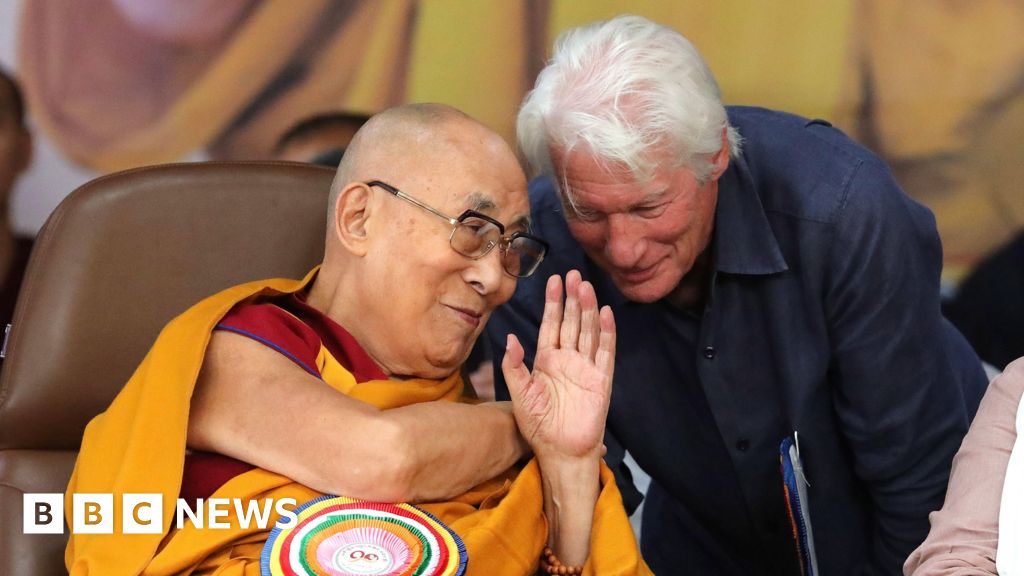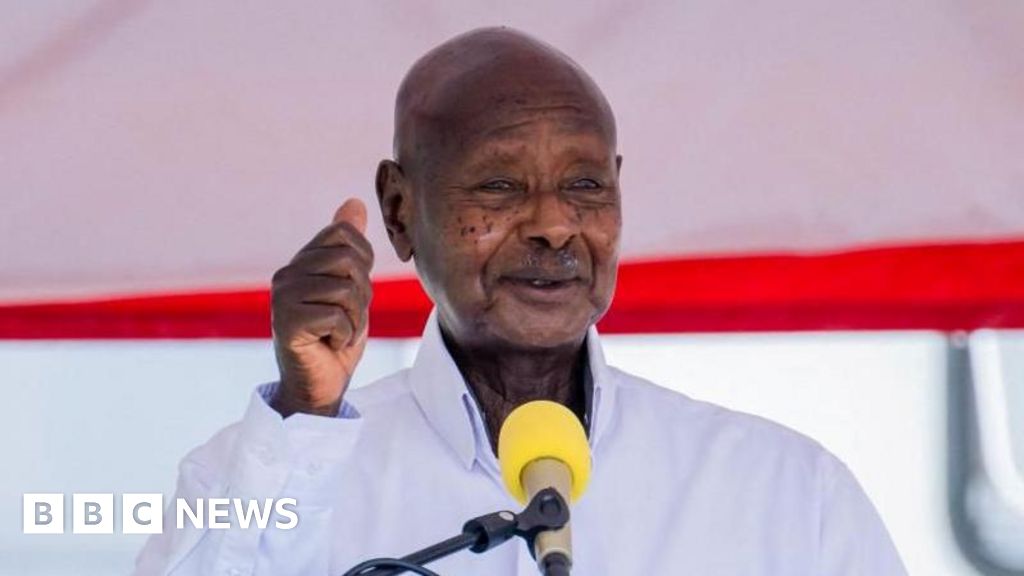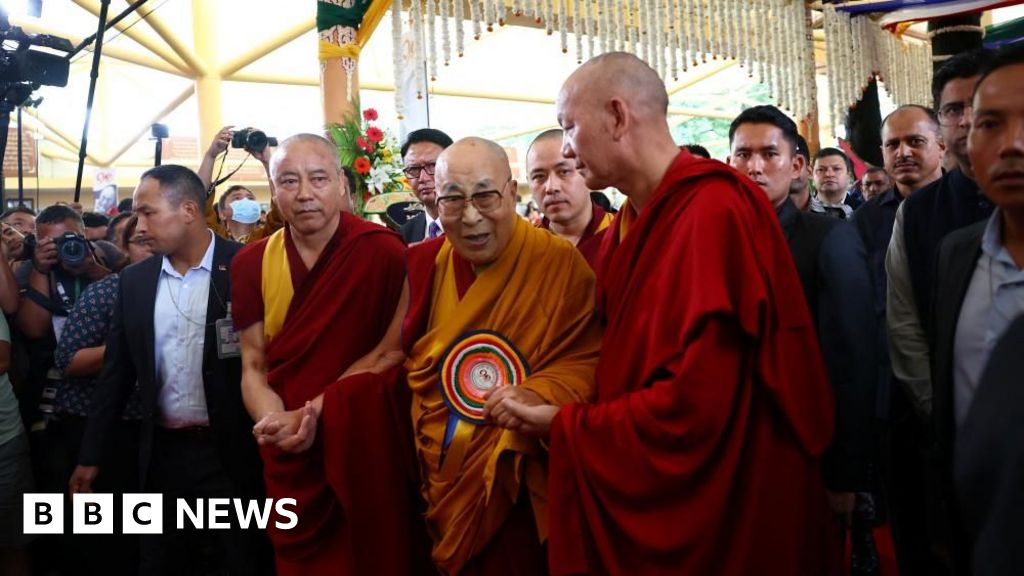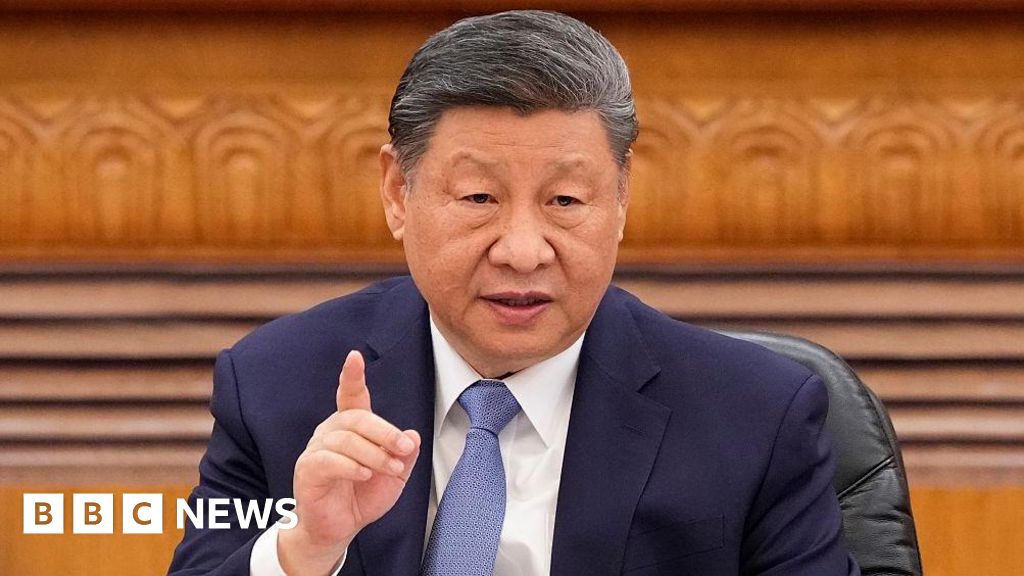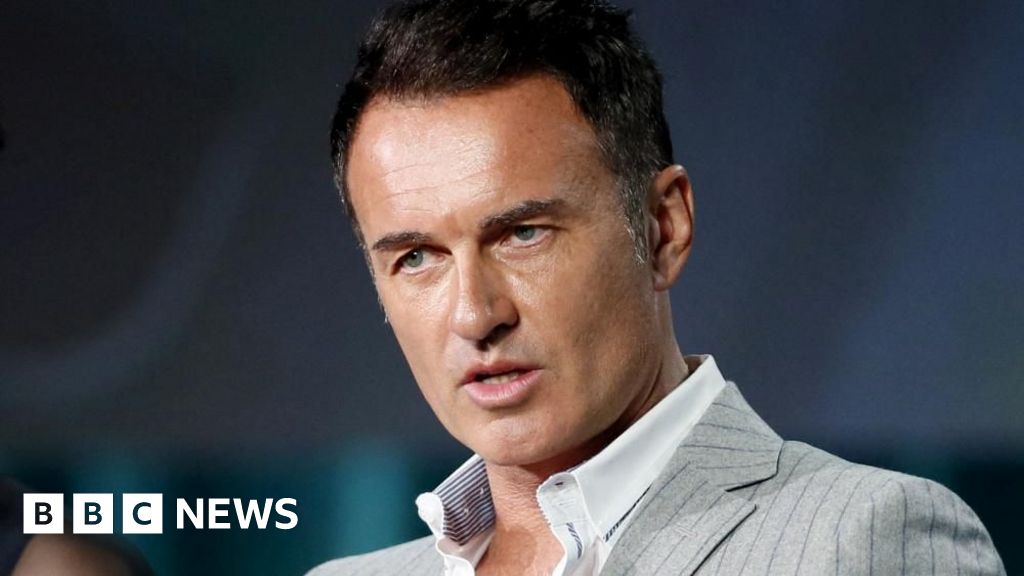Business reporter
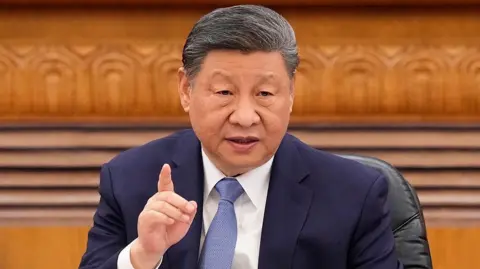 Getty Images
Getty ImagesAs US President Donald Trump laid out tariffs on virtually every one of America’s trading partners on Wednesday, he had strong words for Beijing.
“I have great respect for President Xi [Jinping] of China, great respect for China, but they were taking tremendous advantage of us,” Trump said during his roughly hour-long address.
Holding up a chart listing countries and territories that he said had put up trade barriers to US goods, Trump said: “If you look at that… China, first row, 67%. That’s tariffs charged to the USA, including currency manipulation and trade barriers.”
“We are going to be charging [them] a discounted reciprocal tariff of 34%,” he added. “In other words, they charge us, we charge them, we charge them less. So how can anybody be upset?”
But China’s Commerce Ministry immediately called the move “a typical act of unilateral bullying” and pledged to take “resolute countermeasures to safeguard its rights and interests”.
And state news agency Xinhua accused Trump of “turning trade into an over simplistic tit-for-tat game”.
Experts believe Beijing has good reason to be upset.
For one, the latest announcement is an add on to existing tariffs of 20% on Chinese goods.
Secondly, by imposing heavy tariffs on other South East Asian countries including Cambodia, Vietnam and Laos, it has ‘slammed the door shut’ on how China rejigged its supply chains to get around the tariffs imposed on Beijing during Trump’s first term.
There were five Asian nations in the 10 countries and territories hit with the highest tariffs.
The taxes are adding up for China
Trump has imposed new tariffs on Chinese imports since returning to the White House in January, ratcheting up levies to 20%.
In less than a week, these tariffs will jump to 54%, apart from on products like cars, steel and aluminium, which will be subjected to lower tariffs.
Beijing has also been on the receiving end of other Trump trade salvos.
Earlier on Wednesday, the President signed an executive order to end a provision for low-value parcels from China.
This had allowed Chinese e-commerce giants like Shein and Temu to ship packages with a retail value of under $800 (£617) to the US, without taxes and inspections.
Close to 1.4 billion shipments entered the US under the provision in the last financial year, according to customs data.
The removal of the exemption could force some Chinese firms to pass the extra cost on to customers, making their goods less competitive in the US.
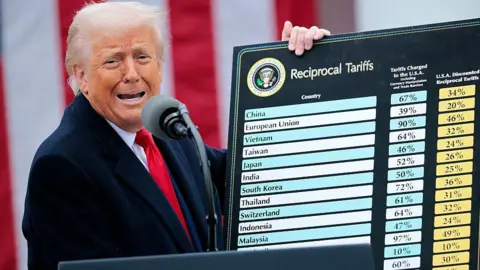 Getty Images
Getty ImagesWhen taken together, this is a worrying picture for Beijing, said Deborah Elms from the Hinrich Foundation consultancy.
“I don’t think the new tariffs are necessarily aimed at China. But when the United States stacks tariffs on top of each other, specifically towards China, the numbers become eye-watering quite quickly.”
“China and the Chinese will have to retaliate. They are not going to be able to sit back and watch this,” she said.
Supply chain hit
Trump also imposed heavy tariffs, ranging from 46% to 49%, on Vietnam, Laos and Cambodia.
This represents “a full-frontal assault on Beijing’s extended supply chain,” said Stephen Innes from investment firm SPI Asset Management.
“Vietnam… and others in the periphery are collateral damage in what is shaping up to be the most aggressive realignment of US trade policy in a generation,” he added. “This isn’t tit-for-tat – it’s strategic containment via tariff warfare.”
Laos and Cambodia, which are among the poorest countries in the region, are heavily dependant on Chinese investment in supply chain infrastructure. The high tariff rates are expected to hit both countries hard.
China is Vietnam’s largest trading partner. It was one of the key beneficiaries of US-China tensions during Trump’s first term.
In 2018, Trump hit China with tariffs, causing some businesses to rethink where they made their products. Some chose to shift manufacturing to Vietnam.
This has led to an increase of exports from Vietnam to the US, with Chinese companies that have moved production to there contributing to that figure.
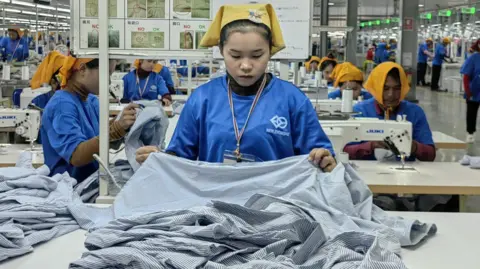 Getty Images
Getty Images“Vietnam was clearly targeted [by Trump] due to its role as a conduit for China’s circumvention of previous tariffs”, former US trade negotiator Stephen Olson told the BBC.
While the US remains Vietnam’s biggest export market, China is its largest supplier of goods, accounting for more than a third of imports, according to the latest official data.
Chinese firms were also behind nearly one in every three new investments in Vietnam last year.
Pushan Dutt, a professor at the INSEAD business school, said the new taxes on South East Asia will be “prohibitive” for China.
“China has a problem with demand and in the last Trump administration their firms had nimbly reacted to tariffs by rejigging supply chains and moving them to [South East Asian Nations]. This door has been slammed shut,” he added.
But Trump’s taxes on the region will also impact US companies that manufacture goods in South East Asia.
For instance, American businesses including technology giants Apple and Intel, and sportswear giant Nike have large factories in Vietnam.
A recent survey by the American Chamber of Commerce in Vietnam found that most US manufacturers there expect to lay off staff if tariffs are imposed.
‘Hard choices’ ahead
There is the question of what China can do to respond to the new tariffs, given it only has days before they are due to take effect.
Mr Olson said he expects Beijing to have a “forceful” response with tariffs and other measures making it more difficult for US companies to operate in China.
With the Chinese economy already facing challenges, Beijing faces “tough choices” in the days ahead, said Professor Dutt.
“Exporting to other regions threatens de-industrialisation in these destinations – and political leaders there are unlikely to accept this. That means China has to finally unleash domestic demand and the Chinese household,” he added.
The tariffs could also push China to try and build alliances with other Asian nations who have been on the receiving end of the tariffs.
Wang Huiyao, a former China Communist Party member who works with the Center for China and Globalisation think tank, called on Asian countries to “work together to go through this difficult time and fight protectionism”.
“In the end, the US could be losing all the influence and isolate itself,” he added.
Some discussions are already underway. China, South Korea and Japan recently held its first economic talks in five years.
They agreed to speed up talks for free trade agreement – which was first proposed over a decade ago.
The new tariffs could give them added incentive to do so.
However, Beijing could face some short-term pain while talks with Washington take its course.
“Ultimately, the US and China are headed for a negotiating table where they’ll try to reach some type of a grand bargain on a wide range of issues,” Mr Olson said.
“That won’t necessarily happen soon and I expect things to get worse before they get better,” he added.
Source link


